Dear Zazie, Here is today’s Lovers’ Chronicle from Mac Tag. Do you know? Rhett
The Lovers’ Chronicle
Dear Muse,
for this one
the word came before
the obvious song
“Where you’re going to”
surely did not for the longest
“Do you like the things that life is showing you”
felt as though all i was bein’ shown was not good
“Do you get what you’re hoping for”
never did, but now
i know where i am goin’
and i like what life is showin’
and i get what i am hopin’
© copyright 2023 mac tag/cowboycoleridge all rights reserved
© copyright 2022 mac tag/cowboy coleridge all rights reserved
between the sad years
and what was thought known
belief bein’ impossible
with words, seekin’ to shape
an alternate to the one left behind,
for it cannot be refuted, inscribed
as it is ruthlessly in my memories
the sad heft of what was left behind
more than once, asked for breath
that i might believe in another
however improbable way
and now i know
© copyright 2021.2023 mac tag/cowboycoleridge all rights reserved
this one is tough
bring you to your knees
because i shoulda known better
damn well coulda kept the wall
high enough not to be breached
evidently life had one
more thing to show me
one more nail
to hammer home
now, doublin’ down here,
that ain’t gonna happen
hear my words
© copyright 2020 mac tag/cowboy coleridge all rights reserved
i still can
though so much has passed…
between those sad letters
and what was known
vanishin’ i could not
name any god
worth worshipin’,
belief bein’ impossible
for the devoutly miserable
unable to bear the masks
of their own faces
with words, seekin’ to shape
an alternate to the one ruined,
for it cannot be refuted, inscribed
as it is ruthlessly in my memories
the sad heft of what was left behind
more than once, asked for breath
that i might believe in another
however improbable way
© copyright 2019 mac tag/cowboy coleridge all rights reserved
and you
what do you know…
know… ha
helluva thing
come full circle
from knowin’ for certain
to not knowin’ a damn thing
and back to knowin’ again
to know
desire, intimacy
what some never know
to know, said softly
lookin’ from the canvas
inward to the memories
really a simple question
the revelation comin’
after years of makin’ do
with only flames struck
unexpectedly in the dark
to know…
your name
repeated
in the silence
owe it all
to you
© copyright 2018 mac tag/cowboy coleridge all rights reserved
Another from the archives. I used to know. Do you know……
They Know
A kiss
A look
A wink
They know
A dream
A word
A nod
They know
A sigh
A wish
A hope
They know
A laugh
A smile
A life
They know
A thought
A touch
A light
They know
© Copyright 2011 Cowboy Coleridge All rights reserved
The Song of the Day is “Do You Know (The Theme from Mahogany)“ by Diana Ross. We do not own the rights to this song. All rights reserved by the rightful owner. No copyright infringement intended.
Today is the birthday of Fabián de la Rosa (Fabián Cueto de la Rosa; Manila, May 5, 1869 – December 14, 1937 Manila); painter. He was an uncle and mentor to the Philippines’ national artist in painting, Fernando Amorsolo, and to his brother Pablo. He is regarded as a “master of genre” in Philippine art.
Gallery

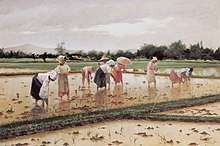

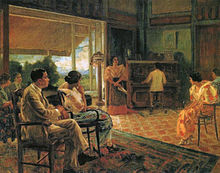


First edition
|
|
And on this day in 1927, To the Lighthouse by Virginia Woolf is first published. The novel centres on the Ramsay family and their visits to the Isle of Skye in Scotland between 1910 and 1920.
Following and extending the tradition of modernist novelists like Marcel Proust and James Joyce, the plot of To the Lighthouse is secondary to its philosophical introspection. Cited as a key example of the literary technique of multiple focalization, the novel includes little dialogue and almost no action. Most of the novel is written as thoughts and observations. It recalls childhood emotions and highlights adult relationships. Among the book’s themes are those of loss, subjectivity, the nature of art and the problem of perception.
To the Lighthouse (1927)
- Could loving, as people called it, make her and Mrs Ramsay one? for it was not knowledge but unity that she desired, not inscription on tablets, nothing that could be written in any language known to men, but intimacy itself, which is knowledge, she had thought, leaning her head on Mrs Ramsay’s knee.
- Part I, Ch. 9
- A light here required a shadow there.
- Part I, Ch. 9
- She felt this thing that she called life terrible, hostile, and quick to pounce on you if you gave it a chance. There were the eternal problems: suffering; death; the poor. There was always a woman dying of cancer even here. And yet she had said to all these children, You shall go through with it.
- Part I, Ch. 10
- She had done the usual trick – been nice. She would never know him. He would never know her. Human relations were all like that, she thought, and the worst (if it had not been for Mr Bankes) were between men and women. Inevitably these were extremely insincere.
- Part I, Ch. 17
- For our penitence deserves a glimpse only; our toil respite only.
- Part II, Ch. 3
- “Like a work of art,” she repeated, looking from her canvas to the drawing-room steps and back again. She must rest for a moment. And, resting, looking from one to the other vaguely, the old question which transversed the sky of the soul perpetually, the vast, the general question which was apt to particularise itself at such moments as these, when she released faculties that had been on the strain, stood over her, paused over her, darkened over her. What is the meaning of life? That was all — a simple question; one that tended to close in on one with years. The great revelation had never come. The great revelation perhaps never did come. Instead there were little daily miracles, illuminations, matches struck unexpectedly in the dark; here was one. This, that, and the other; herself and Charles Tansley and the breaking wave; Mrs. Ramsay bringing them together; Mrs. Ramsay saying, “Life stand still here”; Mrs. Ramsay making of the moment something permanent (as in another sphere Lily herself tried to make of the moment something permanent) — this was of the nature of a revelation. In the midst of chaos there was shape; this eternal passing and flowing (she looked at the cloud going and the leaves shaking) was struck into stability. Life stand still here, Mrs. Ramsay said. “Mrs. Ramsay! Mrs. Ramsay!” she repeated. She owed it all to her.
- Part III, Ch. 3
- Mrs Ramsay sat silent. She was glad, Lily thought, to rest in silence, uncommunicative; to rest in the extreme obscurity of human relationships. Who knows what we are, what we feel? Who knows even at the moment of intimacy, This is knowledge? Aren’t things spoilt then, Mrs Ramsay may have asked (it seemed to have happened so often, this silence by her side) by saying them?
- Part III, Ch. 5
- But one only woke people if one knew what one wanted to say to them. And she wanted to say not one thing, but everything. Little words that broke up the thought and dismembered it said nothing. ‘About life, about death; about Mrs Ramsay’ – no, she thought, one could say nothing to nobody.
- Part III, Ch. 5
- She alone spoke the truth; to her alone could he speak it. That was the source of her everlasting attraction for him, perhaps; she was a person to whom one could say what came into one’s head.
- Part III, Ch. 9
mac tag
Follow us on twitter @cowboycoleridge

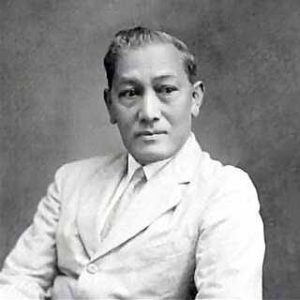
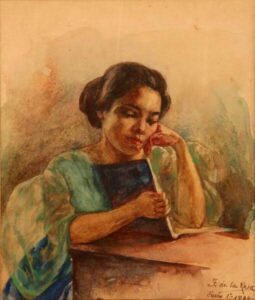
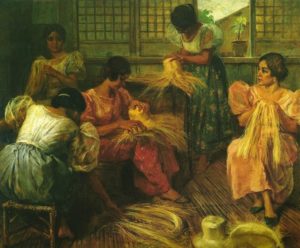
No Comments on "The Lovers’ Chronicle 5 May – know – art by Fabián de la Rosa – publication of To the Lighthouse by Virginia Woolf"